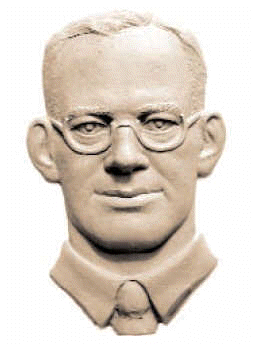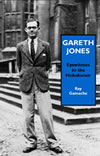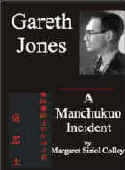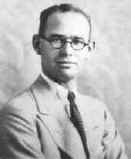Gareth Jones
[bas relief by Oleh Lesiuk]
HOME |
Stop Press |
Complete Soviet Articles & Background Information |
Précis of Gareth's
|
All Published Articles |
BOOKS
|
|
|
|
More Than Grain of Truth(2005) |
|
|
TOPICAL
'Are you Listening NYT?' U.N. Speech - Nov 2009 |
Gareth Recognised at Cambridge - Nov 2009 |
Reporter and the Genocide - Rome, March 2009 |
Order of Freedom Award -Nov 2008 |
Premiere of 'The Living' Documentary Kyiv - Nov 2008 |
Gareth Jones 'Famine' Diaries - Chicago 2008 |
Aberystwyth Memorial Plaque 2006 |
GENERAL
Scholarship Fund |
Site Map |
Links |
Legal Notices |
Sponsored Links |
Contact |
|
||
|
By Gareth Jones THE URDD MEMBERS of Urdd Gobaith Cymru marched with their banners to pack the large platform and to open the National Eisteddfod with the national songs of Wales here today. It was a wise innovation on the part of the Wrexham Eisteddfod Committee, for the presence of the Urdd was symbolic of the part played by youth in modern Wales. No longer can carping critics mock the Eisteddfod as the last resort of hoary bards, and no longer will grim prophecies of the death of the Eisteddfod be made. Moreover, the ceremony was more impressive than the usual Monday performance, which is often depressing. The growth of the Urdd is a sign that a new spirit is rushing through the country, comparable with youth movements in other countries. One characteristic of the post-war generation throughout the world has been the surging of youth movements for the purpose of destroying the old hatreds. Compared with other youth movements in Europe the Welsh movement is upon a far more tolerant and wider basis. It is not tainted with hatred, nor is its scope limited by narrow-mindedness or a framework of political fear. It has idealism like the Hitler, Mussolini, and Communist youth movements, without the draw-backs which make one fear for the youth of Germany, Italy, and Russia. Moreover, the wonder is that the Urdd compares so well in size with these foreign movements, for the latter are financed and driven by all the power of great political forces. There are 55,000 members of the Urdd. When you take into consideration the population of Wales and compare it with England, the number is equlvalent to a membership of over 1,000,000 in Great Britain, about 1,500,000 in Germany, and of 5,000,000 in Russia. If the youth movements of Germany and Italy were run on the same principle as the Urdd we could be full of hope for the future of Europe. Last week I visited the Urdd camp at Llangranog, Cardiganshire, and was impressed by the fine spirit of the children. The performance of “Everyman” was in line with the best European traditions. It was last presented on the grand scale at Salzburg, where Reinhardt was the producer and where it was acted in the open air in front of the cathedral. From the heart of Europe, where snow-covered mountains looking down added a peculiar beauty to the play, it has come to Wrexham where its simple human appeal touched the Welsh audience as much as it did the Austrians. The part taken by Germany’s greatest actor, Alexander Moissi, in Salzburg, was taken here by Clifford Evans, who showed at Neath in the play of the Welsh National Theatre that he has gifts of producing as well as acting. The scenery and lighting effects were dignified, and fitted the simple but deep message and moral truths which the old morality play teaches. Indeed, it was impressive to note than in spite of the mediaeval setting and rich costumes of long ago,” Everyman” had present-day lessons for every eisteddfodwr present. However the audience may change, and although science may have carried us beyond the Middle Ages, the fundamental teachings of this centuries old play still apply to each one of us. The poor neighbour, the debtor, good deeds, the mother, and, above all, death are still among us, and that is why the play has a big influence upon those who saw it. But this effect would not have been reached without the magnificent production of Dr. Hock and the generosity of Lord Howard de Walden. The two innovations, the drama “Everyman” and the Urdd welcome, have made the first day of Wrexham Eisteddfod a memorable one in Eisteddfod history. After the performance of “Everyman” I had a talk with Dame Sybil Thorndike, who expressed her admiration for the work done. She said: “It is one of the most wonderful things, if not the most wonderful thing, I have ever seen in my life. I was carried away by it. It was beautiful. I find it hard to believe that the members of the cast were not all professional actors. They were born for the stage. As for Mr. Clifford Evans, I think he has a brilliant future.” Miss Phyllis Neilson Terry also told me: “It was too beautiful. The timing was perfect and the cast worked together wonderfully. I am not only deeply impressed, but also deeply moved.” My seat was on the aisle along which one of the characters, the Devil, was to rush from the backof the audience to the stage. A man came up to me and said: “Be careful of your chair and legs, because the Devil will be coming.” My neighbour, a minister of the Gospel, turned to me and said: “Don’t be alarmed. The Devil is only a Methodist deacon!” August 8th, 1933. |
GARETH JONES (1905 -35) |




